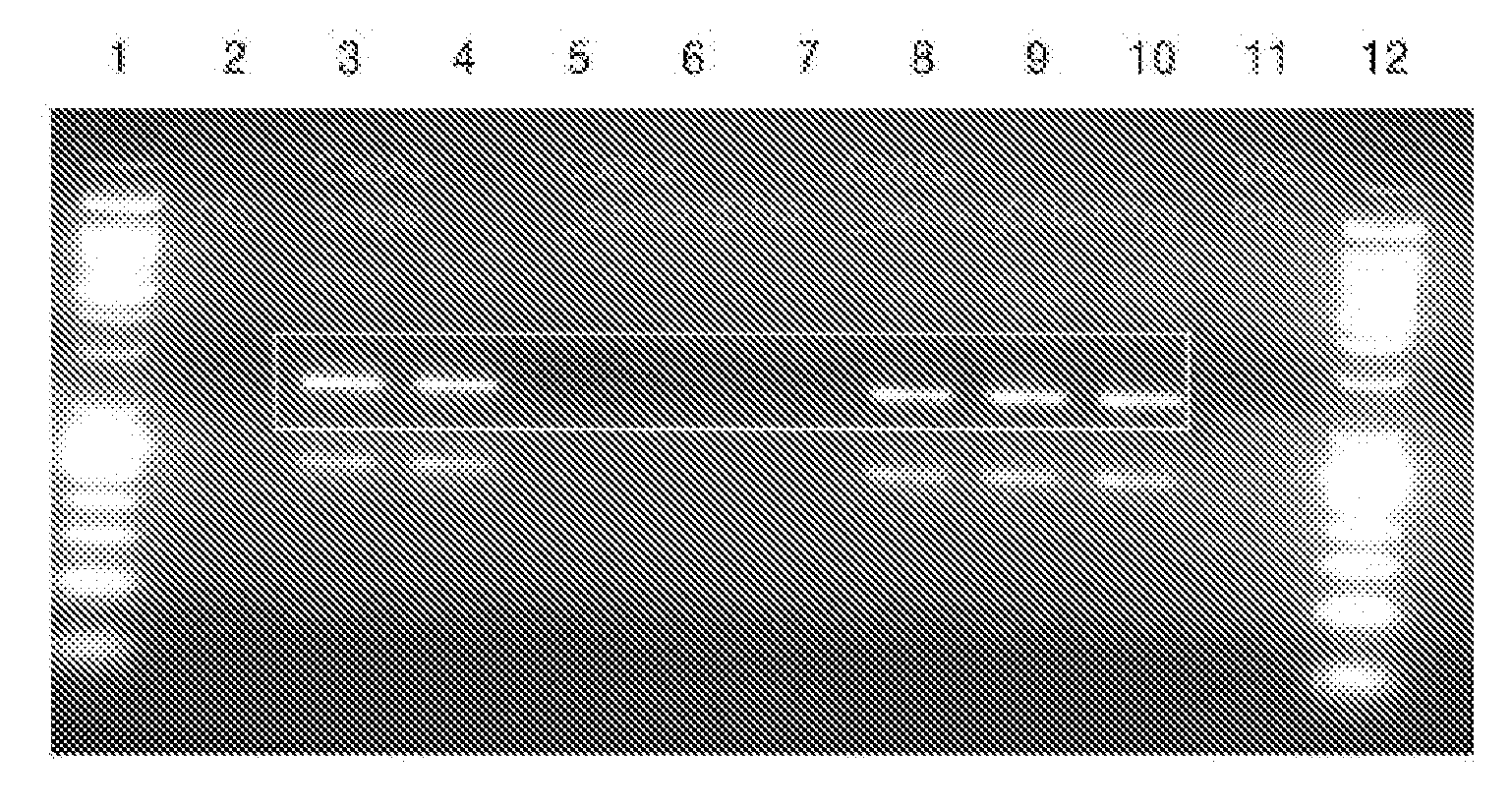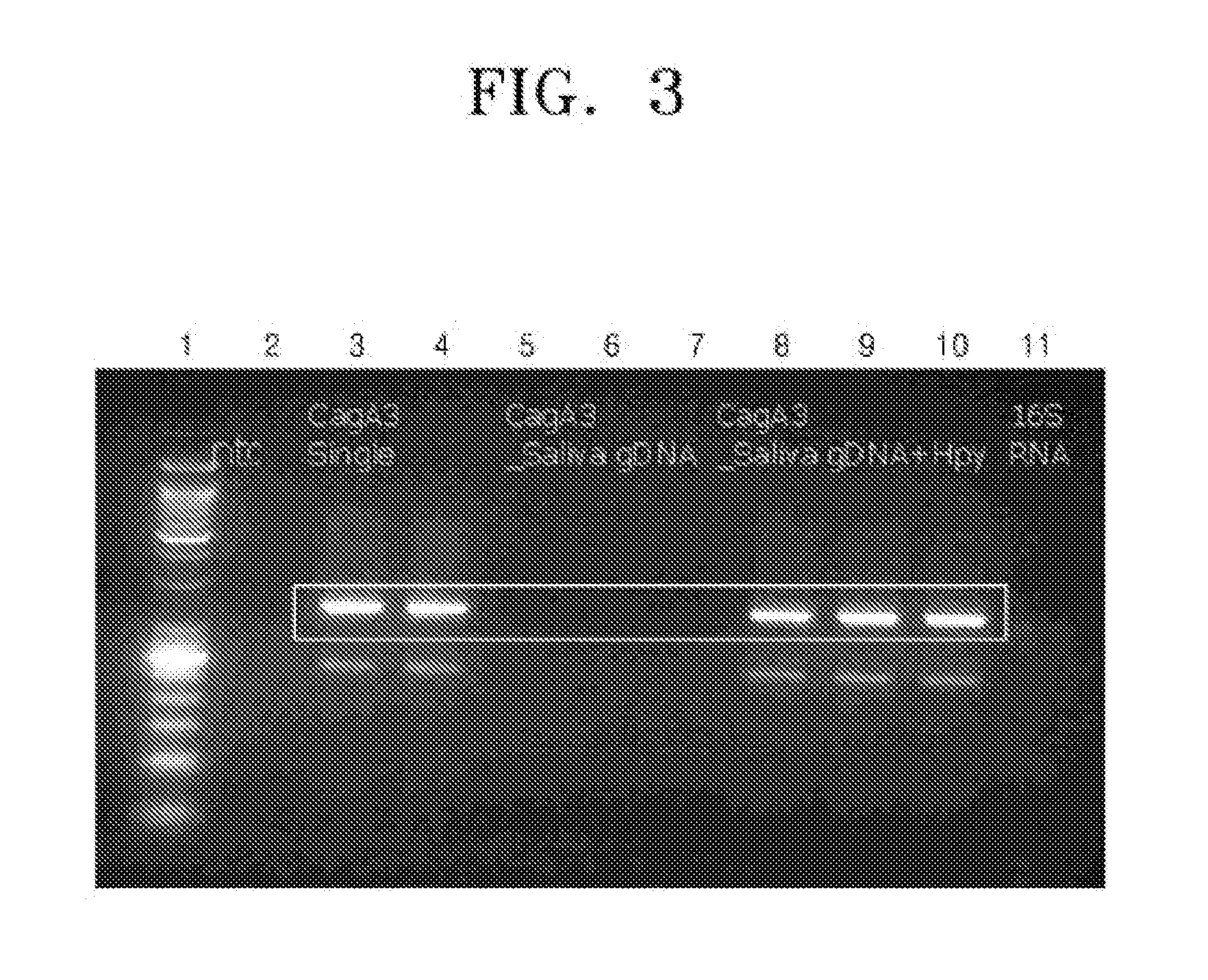Method and compositions for detecting helicobacter pylori
a technology of helicobacter and composition, applied in the field of oligonucleotide primer sets, can solve the problems of difficult collection of mucosal biopsy samples, ineffective culture of isolated epithelial cells from infected people, and inability to eradicate without medical treatmen
- Summary
- Abstract
- Description
- Claims
- Application Information
AI Technical Summary
Problems solved by technology
Method used
Image
Examples
example 1
Selection of primers for amplifying target seguences commonly found in cagA genes of H. pylori isolates
[0042]In Example 1, target sequences in the cagA gene present in 100 isolates of H. pylori were selected, and primer sets capable of amplifying the target sequences were designed.
[0043]First, coding sequences of the cagA gene of H. pylori isolates were acquired from Genbank, and conserved regions were selected as target sequences for species-specific amplification using the program DNASTAR. The conserved regions of the cagA gene coding sequence of H. pylori selected as target sequences were the nucleotide regions corresponding to positions 428-624, 433-668 and 431-671 of SEQ ID No: 7. Subsequently, a primer set was designed to specifically amplify each of the three target sequences. The three oligonucleotide primer sets designed were: an oligonucleotide primer set having sequences as set forth in SEQ ID NOS: 1 and 2, an oligonucleotide primer set having sequences as set forth in SE...
example 2
Amplification of cagA gene of H. pylori using primer sets of the present invention
[0044]Nucleotide regions of the cagA gene of H. pylori corresponding to positions 428-624, 433-668 and 431-671 of SEQ ID NO: 7 were amplified using the three primer sets designed in Example 1.
[0045]First, PCR was performed using genomic DNA of H. pylori isolates as templates and the three primer sets designed in Example 1 as primers to determine if each target sequence was specifically amplified.
[0046](1) Isolation of genomic DNA of H. pylori isolates
[0047]Genomic DNA was extracted from H. pylori isolates using a QIAGEN bacterial DNA extraction kit.
[0048]Then, the genomic DNA was quantified, and small aliquots (10-50 ng) of the genomic DNA was used for subsequent experiments.
[0049](2) PCR
[0050]PCR was performed using 50 μd of a PCR solution obtained by adding sterilized water to 5.0 μl of the genomic DNA (10-50 μg DNA) prepared in (1) as templates, 5.0 μd of 10× Taq polymerase buffer, 1 μl of 10 mM dNT...
example 3
Detection of amplified products of cagA gene of H. pylori
[0051]The PCR products obtained in Example 2 were analyzed using agarose gel electrophoresis. FIG. 1 is an image showing agarose gel electrophoretic results of the PCR products amplified from the cagA genes of the H. pylori isolates by PCR using the primer set as set forth in SEQ ID NOS: 1 and 2 according to an embodiment of the present invention, FIG. 2 is an image showing agarose gel electrophoretic results of the PCR products amplified from the cagA genes of the H. pylori isolates by PCR using the primer set as set forth in SEQ ID NOS: 3 and 4 according to another embodiment of the present invention, and FIG. 3 is an image showing agarose gel electrophoretic results of the PCR products amplified from the cagA genes of the H. pylori isolates by PCR using the primer set as set forth in SEQ ID NOS: 5 and 6 according to still another embodiment of the present invention. In FIGS. 1 through 3, lanes 1 and 12 are molecular weight...
PUM
| Property | Measurement | Unit |
|---|---|---|
| fluorescent | aaaaa | aaaaa |
| phosphorescent | aaaaa | aaaaa |
| gel electrophoresis | aaaaa | aaaaa |
Abstract
Description
Claims
Application Information
 Login to View More
Login to View More - R&D
- Intellectual Property
- Life Sciences
- Materials
- Tech Scout
- Unparalleled Data Quality
- Higher Quality Content
- 60% Fewer Hallucinations
Browse by: Latest US Patents, China's latest patents, Technical Efficacy Thesaurus, Application Domain, Technology Topic, Popular Technical Reports.
© 2025 PatSnap. All rights reserved.Legal|Privacy policy|Modern Slavery Act Transparency Statement|Sitemap|About US| Contact US: help@patsnap.com



